Photovoltaic (PV) systems are a revolutionary solution for sustainable and renewable energy, leveraging sunlight to generate clean electricity. From semiconductor based photovoltaic cells in solar panels to sophisticated software and sensors optimizing performance, each component contributes to efficiency. This exploration delves into the nuanced details, highlighting the holistic nature of PV systems. Whether on residential rooftops or utility scale solar farms, these systems are becoming more efficient and accessible, integrating into mainstream energy infrastructures. With diverse applications, from off grid solutions to contributing surplus electricity to the grid, PV systems embody a transformative journey towards a cleaner and more sustainable energy future.
Components and Technologies in Photovoltaic Systems:
1. Solar Panels (Photovoltaic Modules):
Solar panels are the most recognizable components of a PV system. They consist of photovoltaic cells made from semiconductor materials, usually silicon.
When sunlight strikes these cells, it excites electrons, creating an electric current. The interconnected cells form a module, and multiple modules make up a solar panel.
Types:
Monocrystalline: High efficiency panels with a single crystal structure, offering a sleek appearance but often at a higher cost.
Polycrystalline: Cost effective panels with multiple crystal structures, slightly less efficient than monocrystalline panels but more budget friendly.
Thin film: Flexible and lightweight panels that can be integrated into various surfaces, but typically with lower efficiency and durability compared to crystalline panels.
2. Inverters:
The electricity generated by solar panels is in direct current (DC). Inverters are used to convert this DC power into alternating current (AC), which is the type of electricity used in homes and the power grid.
Inverters also optimize the performance of the PV system, tracking the maximum power point of the solar panels to ensure efficient energy conversion.
Types:
String Inverters: Connect to multiple solar panels in series, cost effective for small to medium installations.
Microinverters: Attach to individual solar panels, optimizing performance for each panel independently.
Central Inverters: Suitable for large scale installations, converting DC to AC for multiple solar panels in a centralized location.
3. Mounting Structure:
Solar panels need to be mounted and angled correctly to capture sunlight optimally. The mounting structure can be fixed or tracking, with tracking systems adjusting the angle of the panels to follow the sun’s path for increased efficiency.
Types:
Fixed Mounting: Panels are stationary and positioned at a fixed angle, suitable for regions with consistent sunlight.
Tracking Mounting: Panels are equipped with systems that follow the sun’s path, adjusting the angle throughout the day for maximum exposure.
4. Racking and Mounting Hardware:
These are the physical structures that support and secure the solar panels. Racking systems can be fixed or adjustable, and they are designed to withstand environmental conditions such as wind and snow loads.
Types:
Fixed Racking Systems: Stable structures that keep panels in a fixed position, ideal for installations in areas with minimal environmental stress.
Adjustable Racking Systems: Dynamic structures allowing for changes in panel tilt and angle, suitable for regions with variable weather conditions.
5. Balance of System (BOS) Components:
BOS components include various electrical and structural elements required for the proper functioning of the PV system. This may include wiring, switches, breakers, and other safety devices.
Types:
Wiring and Connectors: Transmit electrical energy between components, ensuring efficient power flow.
Switches and Breakers: Control the flow of electricity, providing safety features and enabling maintenance.
Safety Devices: Include components like fuses and surge protectors, safeguarding the PV system against electrical issues.
6. Monitoring System:
Many PV systems include monitoring systems that allow users to track the performance of their solar installation. This can include data on energy production, system efficiency, and potential issues that may need attention.
Types:
Performance Monitoring: Tracks real time energy production, system efficiency, and identifies potential issues for immediate attention.
Remote Monitoring: Allows users to access system data and analytics from anywhere, enhancing convenience and enabling swift responses.
7. Battery Storage:
Some PV systems are equipped with battery storage to store excess energy generated during sunny periods for use during cloudy days or at night. This enhances the system’s reliability and enables off grid applications.
Types:
Lead Acid Batteries: Traditional and cost effective option suitable for smaller installations.
Lithium Ion Batteries: Higher energy density, longer lifespan, and faster charging, making them ideal for larger or off grid systems.
8. Power Conditioning Unit (PCU):
In off grid or hybrid systems, a power conditioning unit may be used. This device manages the flow of electricity between the solar panels, batteries, and the electrical loads.
Types:
Off Grid PCU: Manages the flow of electricity in standalone systems, ensuring a stable power supply from solar panels and batteries.
Hybrid PCU: Coordinates electricity flow between solar panels, batteries, and the grid, optimizing energy usage in hybrid setups.
9. Electric Grid Connection (Grid-Tied Systems):
Grid-tied PV systems are connected to the electric grid. Excess electricity generated by the solar panels can be fed back into the grid, and electricity from the grid can supplement the solar power when needed.
Types:
Net Metering Systems: Allows excess electricity to be fed back into the grid, and users receive credits or compensation for the surplus energy.
Grid Supporting Systems: Provide power to the grid during high demand periods, contributing to grid stability and reliability.
Sensors and Software Involved:
The implementation of sensors and software in a photovoltaic (PV) system enhances its efficiency, monitoring capabilities, and overall performance. Here are some common sensors and software components involved in PV systems:
1. Solar Irradiance Sensors:
Solar irradiance sensors, such as pyranometers and pyrheliometers, meticulously measure the intensity of sunlight. This data is instrumental in optimizing the positioning of solar panels, ensuring they are oriented to capture sunlight at the most effective angles. For instance, in solar tracking systems, these sensors dynamically adjust the panel’s orientation throughout the day to maximize energy capture.
2. Temperature Sensors:
To address the critical impact of temperature on efficiency, temperature sensors are strategically placed on solar panels. These sensors monitor the temperature and ensure that the panels operate within optimal temperature ranges. For instance, a rise in temperature can decrease efficiency, and this data helps implement cooling mechanisms or adjustments to maintain peak performance.
3. Inverter Sensors:
Inverter sensors play a pivotal role in monitoring various parameters such as voltage, current, and temperature within the inverter. This real time data is indispensable for the proper functioning of the inverter, ensuring it operates within safe limits. For example, if the temperature surpasses the recommended threshold, the inverter may adjust its operation to prevent overheating and optimize energy conversion.
4. Tilt and Angle Sensors:
Tilt and angle sensors assist in determining the optimal orientation of solar panels relative to the sun’s position. These sensors dynamically adjust the tilt and angle based on the sun’s movement throughout the day, maximizing energy capture. For instance, in solar tracking systems, these sensors facilitate continuous adjustments, ensuring panels are aligned for optimal sunlight exposure.
5. Wind Sensors:
Wind sensors, including anemometers and wind vanes, measure wind speed and direction. This information is crucial for assessing the impact of wind on the structural integrity of solar panels and their support structures. For example, in areas prone to strong winds, these sensors trigger safety mechanisms to protect the panels from potential damage.
6. Electricity Meters:
Electricity meters quantify the amount of electricity generated by the PV system. This data is vital for monitoring performance and financial purposes, particularly in grid tied systems with net metering. For instance, users can track their electricity production and consumption, facilitating accurate billing and providing insights into the system’s overall efficiency.
7. Shade Sensors:
Shade sensors, often utilizing advanced technologies like LiDAR or infrared imaging, identify areas of shade on solar panels. This granular data is crucial for optimizing panel placement and avoiding efficiency losses due to shading. For example, in urban environments with nearby structures or trees, shade sensors enable precise adjustments to mitigate shading effects and enhance overall system performance.
8. Current and Voltage Sensors:
Current and voltage sensors measure electrical parameters within the system, providing essential data for monitoring and controlling the flow of electricity. This information helps optimize energy conversion and ensure the system operates efficiently. For example, these sensors enable real time adjustments to match the electrical requirements of connected devices, maximizing overall system performance.
9. Humidity Sensors:
Humidity sensors provide insights into environmental conditions that can impact the system’s performance, particularly in off grid and remote installations. For instance, in humid climates, these sensors help anticipate and mitigate potential issues such as corrosion or electrical failures, enhancing the system’s reliability.
10. Battery State of Charge Sensors:
In PV systems with battery storage, state of charge sensors monitor the energy stored in the batteries. This information is crucial for managing and maintaining the health of the battery bank. For example, these sensors facilitate precise control, preventing overcharging or deep discharging, which can extend battery lifespan and optimize energy storage capacity.
Software:
1. Monitoring Software:
Purpose: The command center of a PV system, monitoring software ensures real time oversight and analysis of system performance. It goes beyond issue identification, employing algorithms for proactive optimization.
Functionality: Collects data from various sensors, offering insights into system behavior. Utilizes algorithms for real time analysis and proactive adjustments, enhancing overall performance through intelligent optimization.
2. Data Logging Systems:
Purpose: Acting as meticulous archivists, data logging systems capture historical data for comprehensive performance analysis and predictive maintenance.
Functionality: Records and stores historical data from sensors. Integrates machine learning algorithms to identify patterns, facilitating continuous improvement and supporting informed decision making.
3. SCADA Systems:
Purpose: SCADA systems serve as maestros in large scale PV installations, overseeing and actively controlling the entire solar power plant.
Functionality: Provides a centralized interface for real time adjustments, optimizing energy output and ensuring peak operational efficiency. Acts as a control hub for seamless coordination of various elements in the solar power plant.
4. Remote Monitoring and Control Systems:
Purpose: Enabled by IoT, remote monitoring systems grant users real time access to PV system data, allowing remote adjustments for optimal performance.
Functionality: Utilizes IoT connectivity for remote data access. Enables users to make real time adjustments, fostering convenience, swift responses, and continuous improvement in PV system operation.
5. Predictive Analytics Software:
Purpose: Transforming PV systems into forward thinking entities, predictive analytics software forecasts performance based on historical data and weather forecasts.
Functionality: Analyzes historical data and weather forecasts using machine learning algorithms. Empowers proactive maintenance, minimizes downtime, and maximizes energy production efficiency through informed decision making.
6. Energy Management Software:
Purpose: Acting as a strategic commander, energy management software optimizes electricity use, especially in grid-tied systems with energy storage.
Functionality: Utilizes advanced algorithms to dynamically allocate energy resources. Maximizes green energy utilization, contributes to grid stability, and ensures efficient electricity management in grid-tied systems.
7. GIS Software:
Purpose: GIS software becomes a strategic tool in the planning phase, analyzing geographical and topographical data to determine optimal locations for solar panels.
Functionality: Analyzes geographical and topographical data, guiding the placement and orientation of solar panels for maximum energy capture. Shapes the blueprint of sustainable energy infrastructure through informed decision making.
8. Simulation Software:
Purpose: Serving as virtual laboratories for engineers, simulation tools predict PV system behavior accurately during the design phase.
Functionality: Models PV system behavior under different conditions, allowing exploration of scenarios. Aids in optimal system fine tuning and serves as a risk mitigation tool for informed decision making in the design phase.
Photovoltaic systems, through their intricate combination of hardware, sensors, and software, represent a sustainable and efficient means of harnessing solar energy. The ongoing advancements in technology continue to enhance the capabilities of PV systems, making them increasingly integral to the global pursuit of clean and renewable energy sources. As the world transitions toward a more sustainable future, photovoltaic systems stand at the forefront, providing a viable and eco friendly solution to our energy needs.



